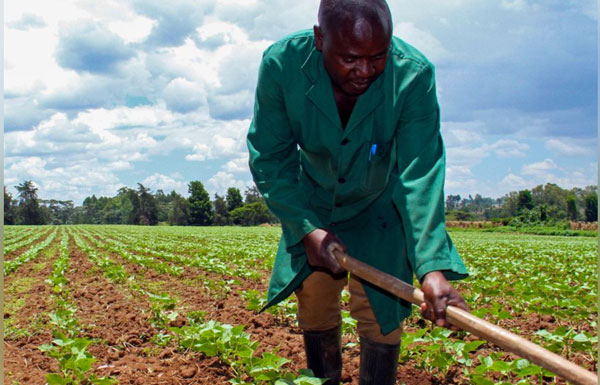
African nations escalated horticultural exports last year as they sought to tackle global supply shortages and diversify their exports.
SPECIAL REPORT | BIRD AGENCY | An upsurge in demand for horticultural products across global markets, particularly in Europe, spurred a significant increase in agricultural export revenues for several African countries last year.
Wandile Sihlobo, chief economist at the Agricultural Business Chamber of South Africa (Agbiz), reported via his blog that South Africa’s agricultural exports surged to a record US$13.2 billion in 2023, a 3% increase from the previous year.
“The products that dominated the export list were citrus, maize, apples, pears, nuts, wine, soya beans, sugar, wool, grapes, berries, avocados and fruit juices,” Sihlobo explained.
Fruits and wine were key exports to Europe, particularly the UK, while maize, soya beans, wool, and beef were main exports to Africa and Asia.
Extreme weather in Europe, like the UK’s record winter rainfall, impacted agriculture there and hit local production and exports. In Spain, avocado and mango production dropped 80% due to severe droughts, according to The Euro Weekly News, a European news outlet.
Elsewhere, floods, hail, and high temperatures, along with pest invasions, harmed fruit production, notably in Italy, reducing horticultural output in major consumer markets.
South Africa and other African nations capitalised on the resultant shortages, boosting exports to these markets.
Egypt, another significant producer of horticultural crops, especially oranges, witnessed significant success last year, almost doubling fresh fruit exports to key markets in the EU.
According to EastFruit, an international information and analytical platform for fruit and vegetable business, Egyptian fresh fruit exporters reached half a million tons in volumes for the first time ever, capitalising on supply gaps in markets such as Spain, where production of oranges and mangoes dropped by a record 80% due to drought.
Egypt’s agriculture exports achieved an increase of almost US$240 million for the first 10 months of 2023, according to January data from the Central Agency for Public Mobilization and Statistics.
Egypt’s orange exports to Spain grew a record 4000 times between November 2022 and October 2023, according to EastFruit.
Morocco, another horticultural hub in Africa, is expanding its horticultural export range beyond traditional crops like tomatoes and cucumbers, which faced supply constraints due to severe weather conditions last year.
According to data from the Global Trade Tracker, Morocco exported 48,000 metric tonnes of sweet peppers between July and November 2023, marking a 9% increase compared to the previous season.
Recent data from Kenya, as reported by the Central Bank of Kenya, indicated significant growth in horticultural exports in 2023. Over the first 10 months of the year, Kenya exported 580,648 metric tons of horticultural produce, marking an increase from 572,290 metric tons in 2022.
The Netherlands emerged as Kenya’s primary market for horticultural exports in 2023, constituting 47% of the total exports.
After adding India to its growing list of export markets for its avocados, Kenya is looking to increase its market base even further. Notably, Kenya and the EU are at the final stages of implementing a trade agreement aimed at providing duty-free, quota-free market access for both parties.
The EU parliament last month endorsed the pact, and it now awaits a nod from the Kenyan parliament for implementation within “two to three months,” according to The East African.
In neighbouring Tanzania, horticultural exports saw a notable uptick over the past two years to December 2023. The country’s ministry of agriculture reported a rise from US$2.1 billion in 2021 to US $2.3 billion in 2023.
According to FreshPlaza, Agriculture Minister Hussein Bashe attributed this 9% revenue surge to increased export volumes of key crops such as coffee, tobacco, cashew nuts, rice, sesame, legumes, and, also, notably, avocados.
Looking ahead to 2024, Tanzania is poised to enter the lucrative Chinese market seeking markets for its avocados, expanding beyond traditional markets in Europe like the Netherlands, France, and the UK.
Kenya’s successful entry into the Chinese market in 2022 has been critical to boosting its avocado exports. Business Daily reports a remarkable tenfold increase in avocado exports to China, reaching 4,324.1 metric tons in 2023 from 443.6 metric tons in 2022.
African horticultural exports are becoming increasingly vital in the region’s agricultural export landscape. Regional blocs such as COMESA and the EAC are actively involved in enhancing member countries’ capacity and systems to maximize available opportunities.
COMESA and the EAC have launched an accelerator program aimed at bolstering horticultural trade among member states through strategic public-private partnerships.
Known as the COMESA-EAC Horticulture Accelerator (CEHA), this initiative will provide support to farmers and processors through climate-smart solutions and the harmonization of regulatory and standard policies. The objective is to double the volume of preserved or processed fruits and vegetables from 8% in 2021 to 16% by 2031.
****
SOURCE: Bonface Orucho, bird story agency
 The Independent Uganda: You get the Truth we Pay the Price
The Independent Uganda: You get the Truth we Pay the Price


